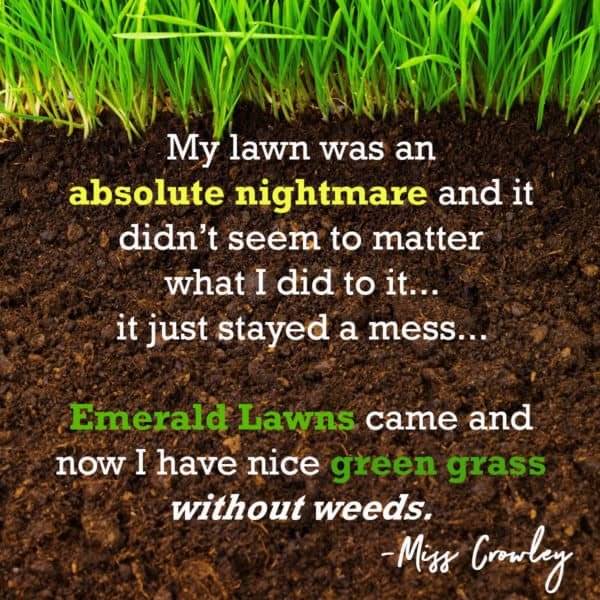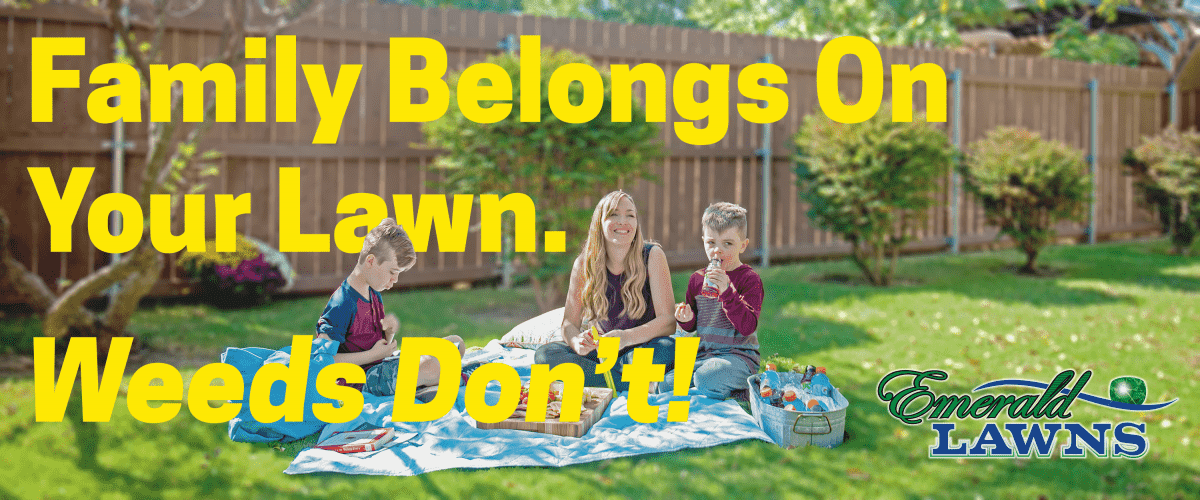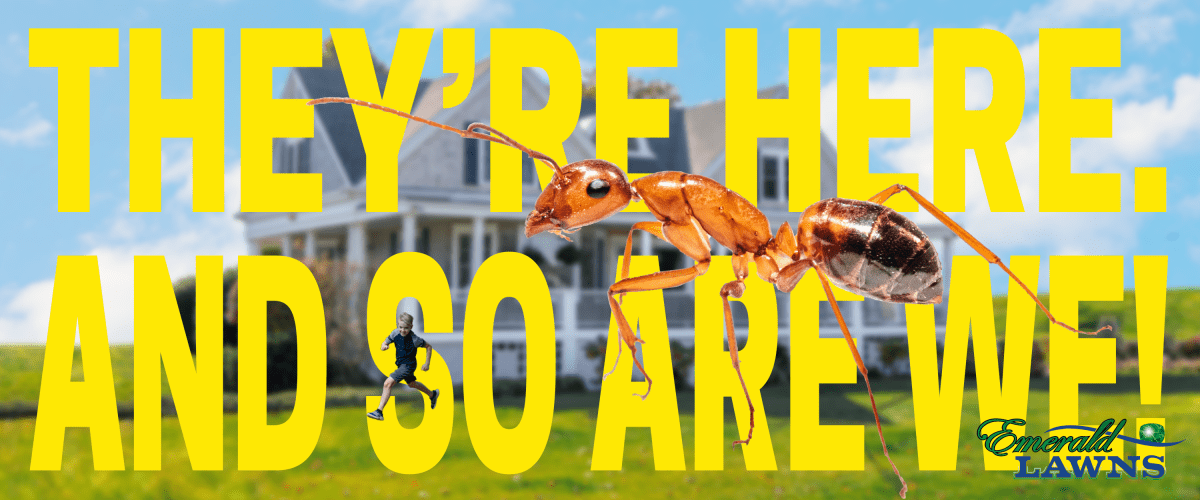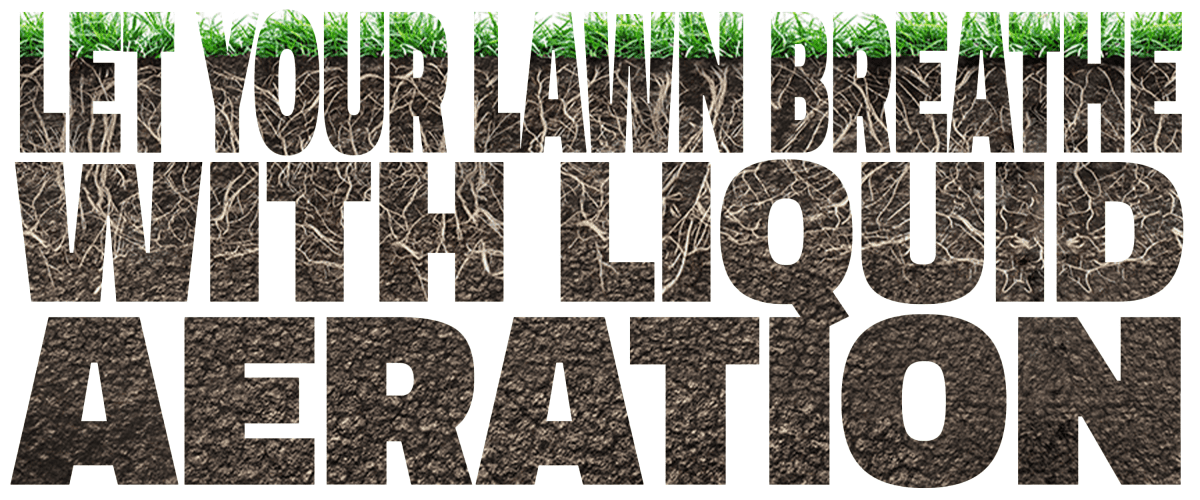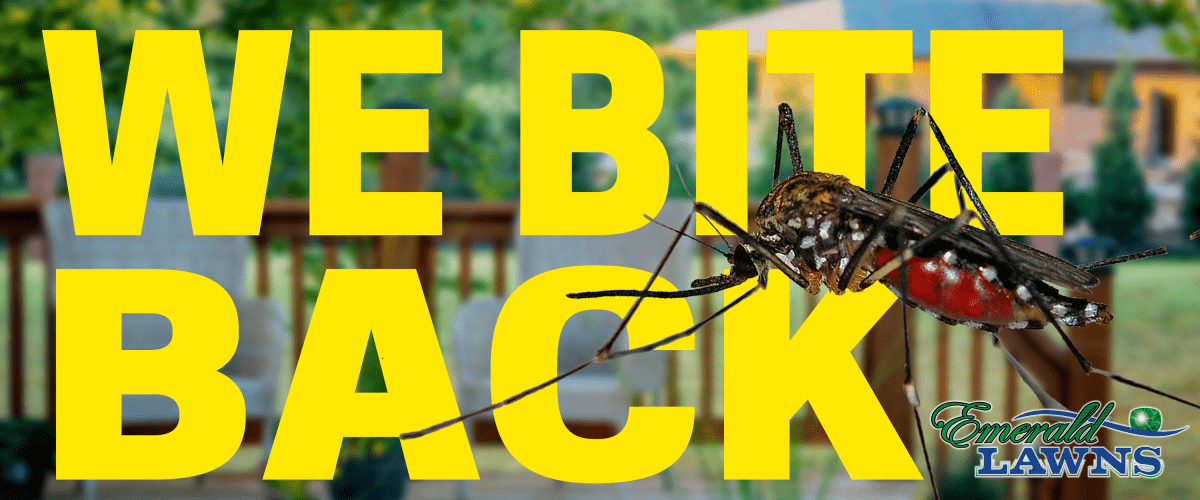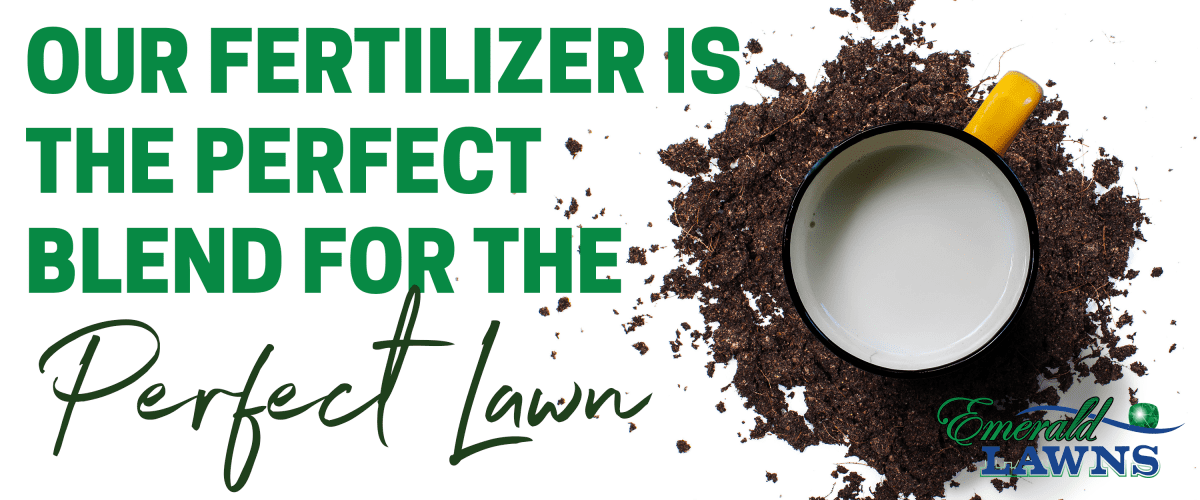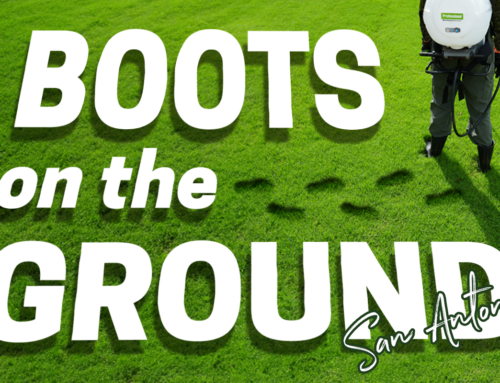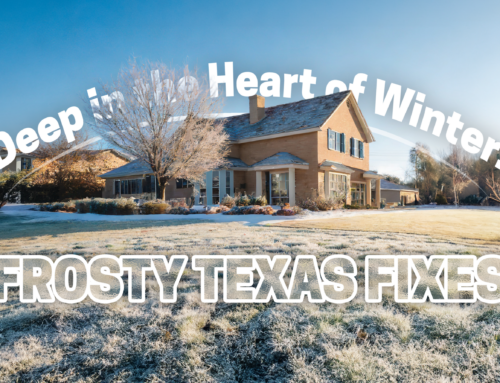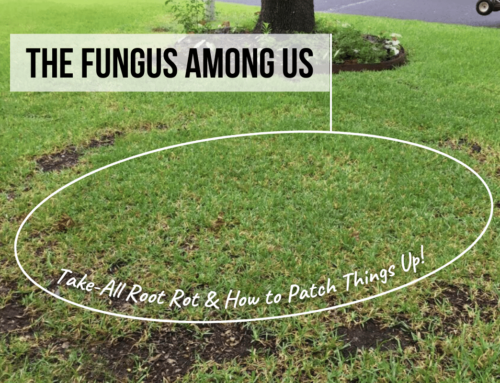
Weeds everywhere! It sometimes feels like they are taking over. But, we’re hoping we can help with that. We’re often asked, “how can I identify weeds in my lawn.” In this blog, learn a little background on the most common weeds, as well as some tips on how to identify weeds in your lawn. Once you know what you’re working with, you can call in the cavalry (us) to get rid of those pesky weeds.
In Texas, there are two main types of weeds: broadleaf and grassy. These can be difficult to treat. There are also subcategories: annual and perennial. Obviously, the perennials are the most difficult to get rid of since they live the longest and keep returning, but, at Emerald Lawns, we’re experts at all levels of weed control.
Broadleaf Weeds
Let’s dive into three of the most common broadleaf weeds found in Texas: henbit, dandelion, and thistle. We’ve also included chickweed and purslane since they are common finds.
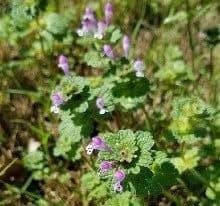
Henbit – A winter annual that blooms in early spring. Henbit is very plentiful in Texas. Henbit’s leaves are rounded with notched edges. They grow every inch or so on a square stem. The stems are weak so the longer the weed grows, the less stable its foundation is. It is purple in color at the very top of the plant.

Dandelion – Due to its seed-head, the dandelion is easily recognizable. Coming from the French name dent de lion (lion’s tooth), the flower has a unique look. People like to blow the seeds, especially children so they take root in a lot of lawns. The leaves grow close to the lawn in a star-shaped pattern. In bloom, the flower is yellow. You will usually see them in spring to early summer. They are a biennial or perennial bloom.

Thistle – has a rapid growth rate and it can get very tall. If you don’t deal with it, it can grow several feet high and about a food wide, taking up a bit of space in your lawn. When it’s young, it resembles a dandelion except that it’s purplish in color and the leaves have long spines on them. They also have hairy, jagged edges. Butterflies and other insects love this woolly biennial or perennial and will often eat from it.
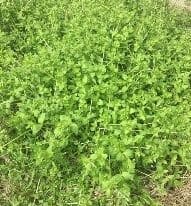
Chickweed – is an annual broadleaf and it germinates in the fall. It grows during the winter, produces seed and dies by early summer. It’s actually an herb and is named the way it is because it’s a favorite food of chickens. Chickweed grows to about 8 inches high and the plant can mat together to about 16 inches. The leaves have smooth edges and are no more than 1 inch long. They always grow in pairs, directly opposite each other on the stem. The stem isn’t smooth. It has hairs covering the entire length. The flowers are small, about 1/8 inch across and are white with five petals, giving them a star shape.
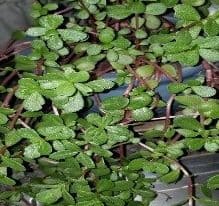
Purslane – tends to appear after the soil warms in late spring or early summer. It’s common in rich, fertile soil. The succulent stems and leaves stay close to the ground. Young leaves and stems are edible. The tiny flowers at the stem tips quickly give way to seedpods. Purslane seeds can persist in soil for years, making them a perennial. It is heat and drought tolerant. It’s known as the Dolly Parton flower because it blooms from 9am to 5pm. The colors of the stems are tinted red. They’re also round. The leaves are paddle-shaped, flat and alternately arranged.
Grassy Weeds
Grassy weeds can be a little more difficult to identify in your lawn than broadleaf weeds because they can resemble regular turf grasses. We will contend with Poa Annua, aka Bluegrass as well as Rescuegrass, Crabgrass, and Dallisgrass.
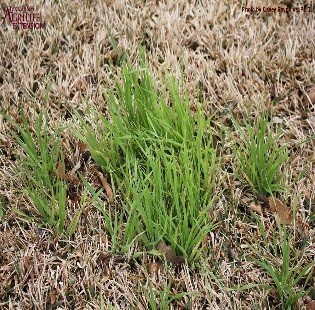
Rescuegrass- One of the most commonly seen grassy weeds in Texas at this time of year. While this grass is very beneficial to wildlife as a food source throughout the state, it’s typically not something we like to see in our manicured lawns. The good news is, this grass weed will naturally die off as the weather warms over the next month or two. Winter annual grassy weed with a drooping, panicle inflorescence consisting of strongly flattened spikelets, each containing 4-9 florets. Leaf sheaths hairy, upper surface of blades may sometimes be hairy, and a prominent membranous ligule.
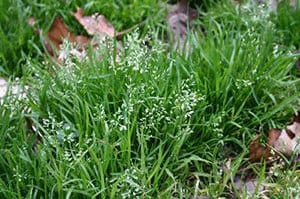
Poa Annua (Bluegrass) – is one of the most commonly seen grassy weeds in Texas. It usually appears during late winter into early spring. It seeds itself nonstop, making it especially difficult to get rid of, and one plant can put thousands of seeds across your lawn with the help of a pet or even a lawnmower. If you have Bermuda or zoysia grass, this weed can be controlled before and after it has germinated. With St. Augustine grass, you have to catch it before it germinates. The most common bluegrass in our area is an upright type with a bunch-type growth pattern. It’s an annual and survives in the soil where moisture is abundant. When seed heads appear, they give a yellow-ish, white color to the lawn and an uneven appearance.
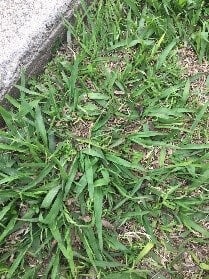
Crabgrass – this annual is one of the most hated weeds because it can hold many seeds that can stay dormant for a long time. It can pop up even in the best cared-for lawns. The seeds have to have light to germinate. It starts to show up in spring and dies during the winter. Soil aeration may actually help crabgrass to grow since it needs the light and air that this procedure brings. There are two species of crabgrass found in the temperate and semi-tropical areas of the US. There’s a smooth crabgrass and hairy crabgrass. Once crabgrass germinates, it rapidly dominates a turf. It grows faster than regular turf grasses and can easily overtake a lawn. It can also grow in drought and other conditions where regular turf grasses suffer.
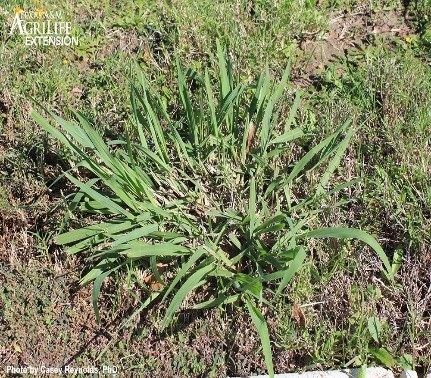
Dallisgrass – is troublesome throughout the South. Dallisgrass control has become a concern for both private and public lawn areas. It is a course textured perennial that grows in an ever-enlarging circular clump, sometimes growing so large that the center dies out while the outer rings continue smothering all the turf grasses they encounter. Its short rhizomes root easily in moist soil, making it difficult to control. Dallisgrass weed thrives in sandy or clay soils. It loves nitrogen fertilizer and grows twice as fast as regular turf grasses, which can create obstructions for the golfer, hazards for the field athlete and unsightly tufts for the homeowner.
If you’re tired of dealing with weeds, give us a call. We would be happy to come out and perform a free evaluation for you.
Our customers that get 5 or more treatments per year don’t need to pull weeds or wait for us to return. They just visit our website or give us a call and request a free service call for weeds. We get out to treat them within a few business days.



